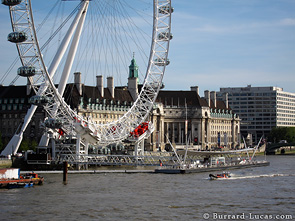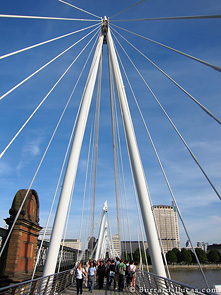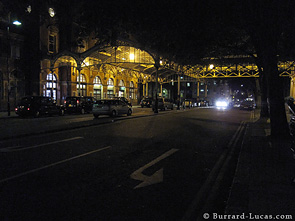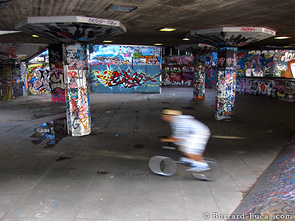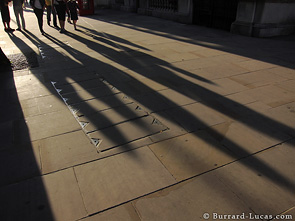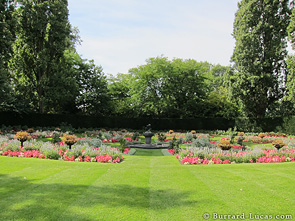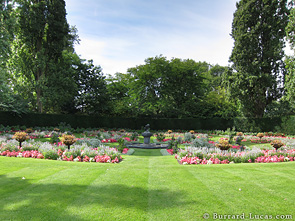Introduction
For quite a while I have wanted a compact camera that I can take with me when it is not practical to lug around a DSLR. However, since I am accustomed to using a state-of-the-art DSLR, I have high expectations for any compact camera that I might use. Specifically:
- Image quality should be compromised as little as possible.
- The camera needs to allow full manual control.
- The camera must fit in my pocket (otherwise I could just take a DSLR).

On paper, Canon’s new PowerShot S95 seems to fulfill all of these criteria:
- It has a large sensor for a compact camera and Canon have sensibly limited the megapixel count to 10MP, this should mean higher image quality with less noise.
- The S95 also has a nice 28-105mm (35mm equiv) F2.0-4.9 lens, which, at f/2 on the widest setting, should result in good low-light performance. The lens also sports Canon’s latest Image Stabilization technology, which promises to significantly reduce the effects of camera shake.
- The camera has manual shooting modes including aperture priority, shutter priority and fully manual. In addition, images can be shot in RAW, which allows more flexibility in post-production.
- The S95 is small with dimensions of just 100 x 58 x 30 mm.
Over the weekend, after years not owning a camera smaller than a brick, I took the plunge and purchased the Canon PowerShot S95. I’ve now had the camera for a few days and I have briefly tested it out on the streets of London.
Image Quality
The image quality has not disappointed me. The 10MP sensor delivers good dynamic range and very little noise. All of the shots displayed here were shot in RAW and converted to JPEG using the supplied software (Digital Photo Professional) unless stated otherwise. You can download the unprocessed full-size jpeg files at the bottom of this page.
I instantly liked the S95’s lens which produced very nice results especially at the wide end. The new hybrid image stabilization is very effective and helps reduce camera shake significantly, especially at longer focal lengths. The images below show the results at full zoom and full wide angle respectively.
Low Light Performance
The low light performance of a compact camera’s sensor can never compare to that of the larger sensors found in DSLRs, however, I found the S95 produced decent results even at ISO 800 (below left). The fast f/2 lens and ISO 1600 allowed me to shoot a dark street-lit scene hand-held and produced a surprisingly good picture (below right). You can download the unprocessed jpegs at the bottom of the page if you would like to take a closer look at the noise.
Manual Control
The S95’s build quality is good and the clean design is finished off with a nice matt finish. The controls are simple and intuitively placed and the inclusion of two programmable control rings allows quick operation of manual controls. The tactile control ring around the lens is a nice touch.
I found myself mainly using aperture priority mode with lens ring controlling the aperture and the wheel on the back controlling exposure compensation. One button press and a turn of the thumb wheel could then be used to set the ISO.
The images below were taken in shutter priority mode and aperture priority mode respectively. In the first shot I was quickly able to set an appropriate shutter speed to blur the motion of the bike and in the second I used exposure compensation to darken the shadows.
HDR Mode
I was intrigued about the new HDR (High Dynamic Range) mode that Canon has introduced with this Camera. The camera basically takes three bracketed exposures and outputs them as a single jpeg with greater dynamic range. To use this mode you really need to have the camera on a tripod since the slightest amount of camera shake ruins the picture (for me this slightly defeats the purpose of a compact camera as I would probably just take a DSLR if I also needed to carry a tripod).
I found a high contrast scene to test and took one image using HDR mode and one using Auto mode. Below are the unprocessed jpegs as outputted by the camera.
The HDR mode did seem to work reasonably well and certainly resulted in a bluer sky and more detail in the shadows. I can see this being very useful for people who want to generate HDRs quickly. However, since the camera outputs a jpeg, you do not get a great deal of control over how the final image looks. The S95 can do normal exposure bracketing so, in most cases, I would probably prefer to shoot 3 bracketed RAW images and process them in a program such as Photomatix (although obviously this would be much more labor intensive).
Creative Modes
The S95 has a number of other fun creative modes including “miniature effect” which blurs the top and bottom of the frame like a tilt-shift lens, “fish-eye effect” and “colour swap”. The image below was taken on “colour accent” mode which allows you to keep only a selected colour and convert the rest to black and white.
Video
The PowerShot S95 features 720p HD 24fps movie recording with stereo sound. The video quality was very good and I have uploaded a few video clips which can be seen below. Creative modes such as “miniature effect” and “colour accent” can also be used in video mode and were fun to play with!
Conclusion
In conclusion I am very happy with the Canon PowerShot S95. Its small size means it compliments my arsenal of DSLRs nicely and I will be able to carry with me whenever a DSLR isn’t practical. The image quality is great for a compact and I like the fast wide-angle lens. Finally the ease of use of the manual controls is exactly what I was looking for. There are a few things that the camera is missing such as an optical viewfinder, a hot shoe for an external flash and a better zoom, but these omissions are what help make the camera so small so I can live with them.
If you have any specific questions, please feel free to leave a comment below.
Click here to download the full-size unprocessed jpeg images used in this review.
Want to win a Canon EOS 7D? Enter our free photo contest!


